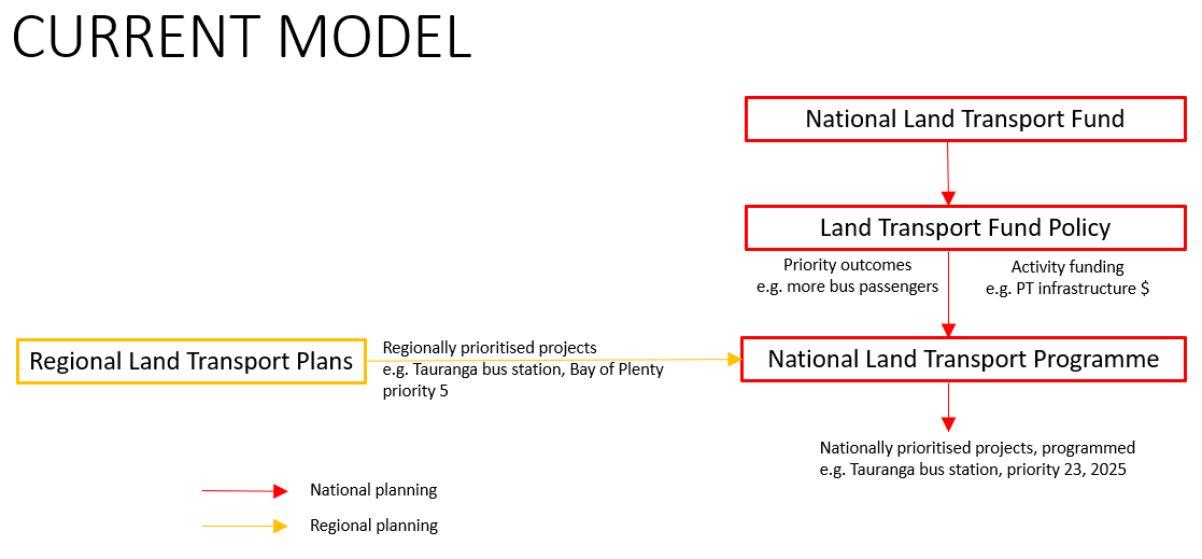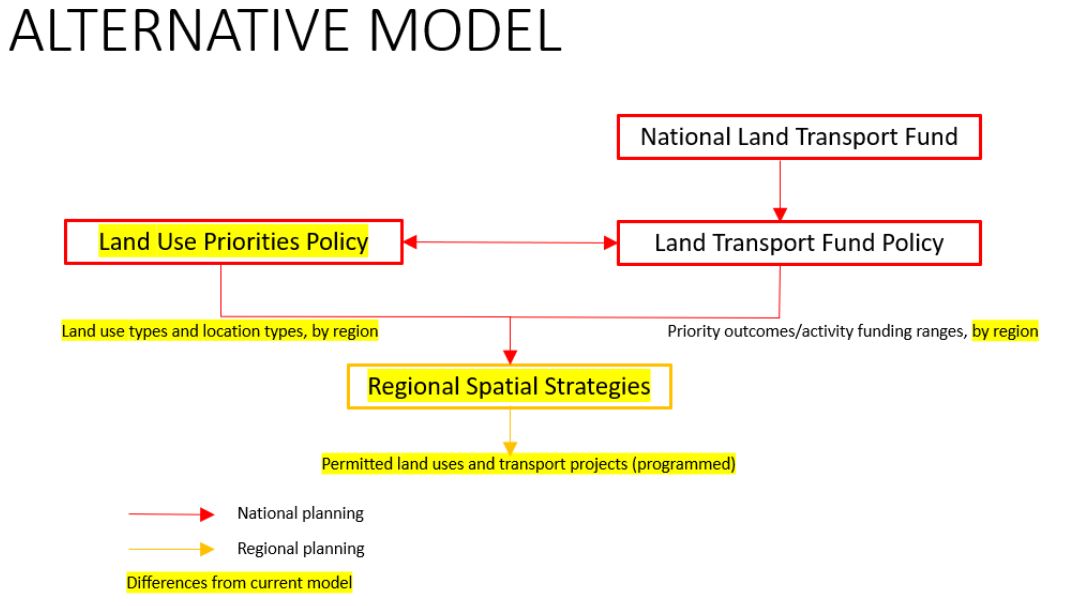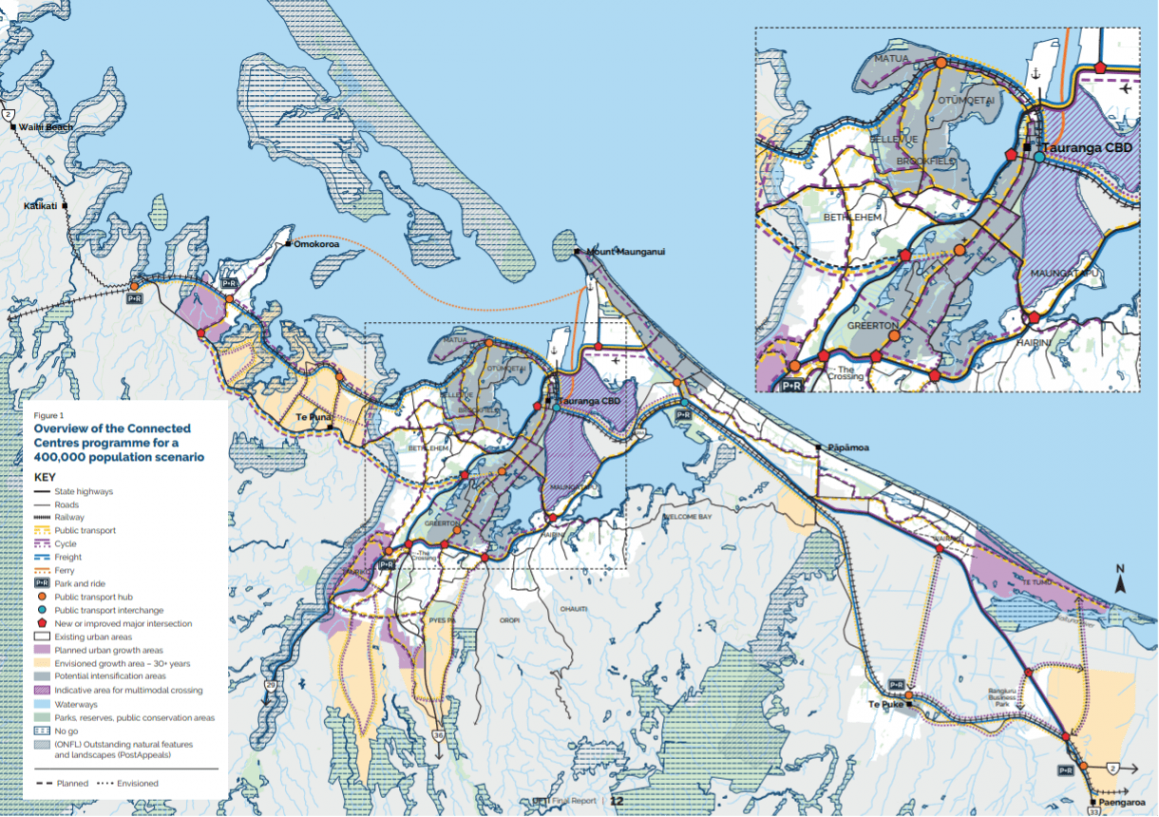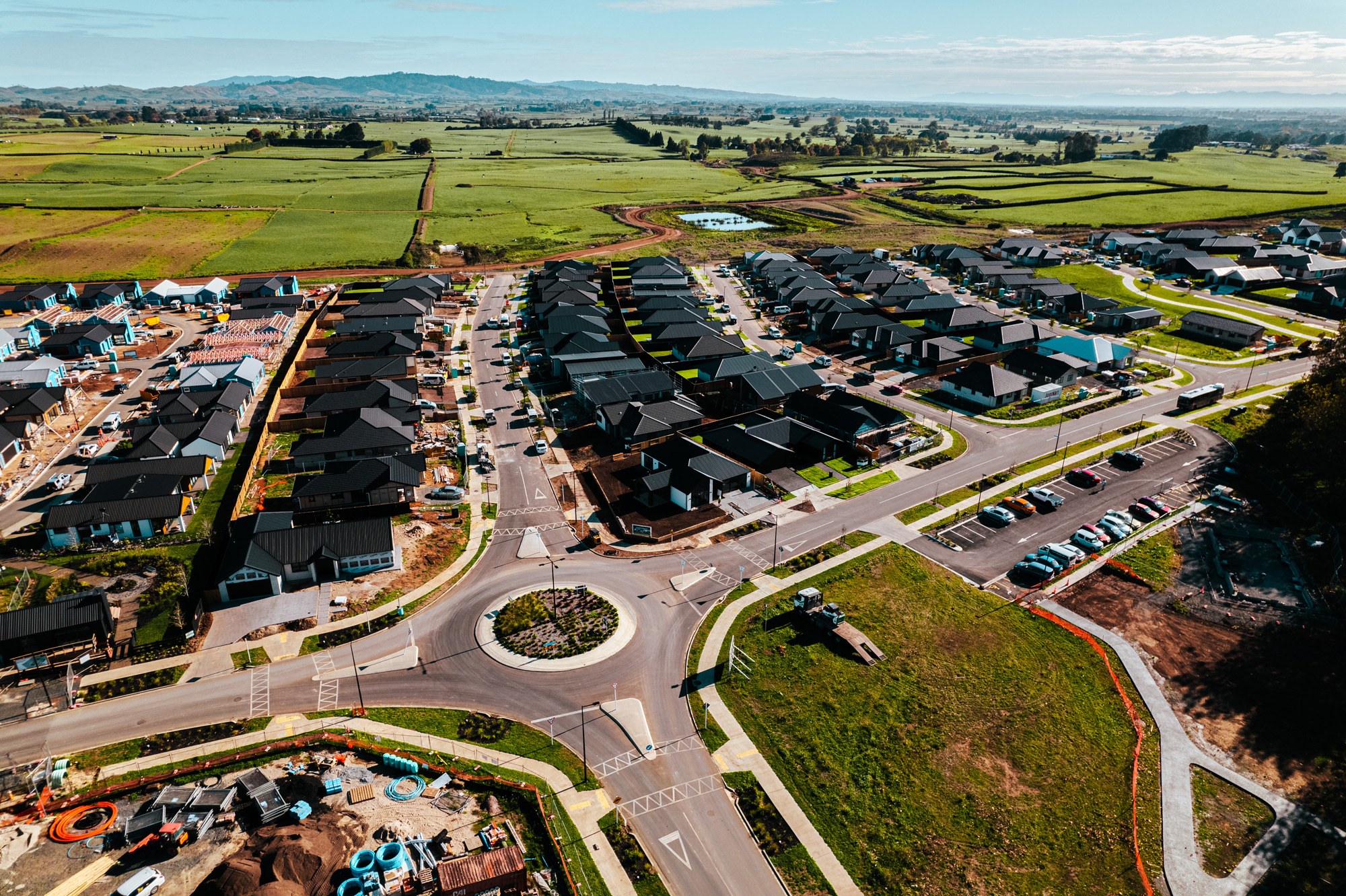6 May 2022
The Resource Management Act is being replaced by three new acts, with one of these being the Spatial Planning Act (SPA). The SPA will require regional spatial plans that identify how land will be developed and/or protected to give effect to central government policy. This includes transport and other infrastructure.
So, if Tauranga City Council wanted to build a new public transport hub, it could submit the project to the Bay of Plenty (BoP) Regional Council which would give it a regional priority ranking in the BoP RLTP alongside other projects across the region. The proposal is then submitted to Waka Kotahi for national prioritisation in the NLTP. The NLTP determines whether and when any NLTF funds can be spent on the project, according to a Government Policy Statement (GPS) on what type of projects qualify. The funding of most transportation projects is therefore subject to national priorities, not regional. Here’s a summary of what the current system looks like.

However, we know that land use is often a bigger determinant of transport outcomes than transport itself (low-density greenfield sprawl creating car dependency, for example). So, what may also be needed is central government direction on land use priorities to complement those for transport – a national policy that directs the land use and location type mix permitted for each region, for example.
Here’s what a new system, where RSS’ replace the NLTP, complemented by national policy on land use priorities, could look like under the SPA:

For central government, if the NLTP is no more, two key issues emerge. First, how deep should it go into regional land use and transport systems to define land use and transport funding policy? Second, what happens if the RSS won’t deliver the priority outcomes, or can’t do so within available funding?
Watch this space for some answers….
About the author
Mark Haseley is a Principal Transport Planner with CKL, based in Tauranga. He worked for Waka Kotahi during the 2010’s on growth strategies for the Western Bay of Plenty, Bay of Plenty Regional Land Transport Plans, and the National Land Transport Programme. He now leads CKL’s land use and transport planning advisory service across the public and private sectors.
If you’d like to discuss this article with Mark, or are looking for strategic advice on land use and transport planning matters for your business, you can call him on 027 880 5440, or e-mail him at [email protected]
LISTEN UP, PLANNERS: TRANSPORT FUTURES AND GOVERNMENT REFORMS
Local government and resource management reforms could make the National Land Transport Programme (NLTP) a thing of the past, with more control of land use and transport futures vested in the regions. How?The Resource Management Act is being replaced by three new acts, with one of these being the Spatial Planning Act (SPA). The SPA will require regional spatial plans that identify how land will be developed and/or protected to give effect to central government policy. This includes transport and other infrastructure.
How we currently plan and fund our transport systems
Every three years regional councils produce Regional Land Transport Plans (RLTP), and Waka Kotahi (the New Zealand Transport Agency) produces a National Land Transport Programme (NLTP). A local council can get around half of its transport project costs funded through the NLTP, but it must be prioritised in its RLTP for it to qualify.So, if Tauranga City Council wanted to build a new public transport hub, it could submit the project to the Bay of Plenty (BoP) Regional Council which would give it a regional priority ranking in the BoP RLTP alongside other projects across the region. The proposal is then submitted to Waka Kotahi for national prioritisation in the NLTP. The NLTP determines whether and when any NLTF funds can be spent on the project, according to a Government Policy Statement (GPS) on what type of projects qualify. The funding of most transportation projects is therefore subject to national priorities, not regional. Here’s a summary of what the current system looks like.

How the SPA could change the system
Through the SPA, it is anticipated that central government will use Regional Spatial Plans (RSS) to give effect to its national land use and transport priorities. National government could still set priority outcomes and NLTF spending limits, but could do so for each region, not just nationally. Regional councils could be tasked with working out where and what to spend their allocated fund on through their RSS, supported by evidence that it will deliver central government outcomes within the available funding. Regional Councils could therefore become accountable for achieving central government transport priorities for their region directly through their RSS. The NLTP could no longer exist.However, we know that land use is often a bigger determinant of transport outcomes than transport itself (low-density greenfield sprawl creating car dependency, for example). So, what may also be needed is central government direction on land use priorities to complement those for transport – a national policy that directs the land use and location type mix permitted for each region, for example.
Here’s what a new system, where RSS’ replace the NLTP, complemented by national policy on land use priorities, could look like under the SPA:

This could change the way central and regional government collaborate
This new system could represent a greater opportunity for regions to take control of their transport systems. But there is a trade-off: more direct central government control of each region’s overall investment direction.For central government, if the NLTP is no more, two key issues emerge. First, how deep should it go into regional land use and transport systems to define land use and transport funding policy? Second, what happens if the RSS won’t deliver the priority outcomes, or can’t do so within available funding?
Watch this space for some answers….
About the author
Mark Haseley is a Principal Transport Planner with CKL, based in Tauranga. He worked for Waka Kotahi during the 2010’s on growth strategies for the Western Bay of Plenty, Bay of Plenty Regional Land Transport Plans, and the National Land Transport Programme. He now leads CKL’s land use and transport planning advisory service across the public and private sectors.
If you’d like to discuss this article with Mark, or are looking for strategic advice on land use and transport planning matters for your business, you can call him on 027 880 5440, or e-mail him at [email protected]





